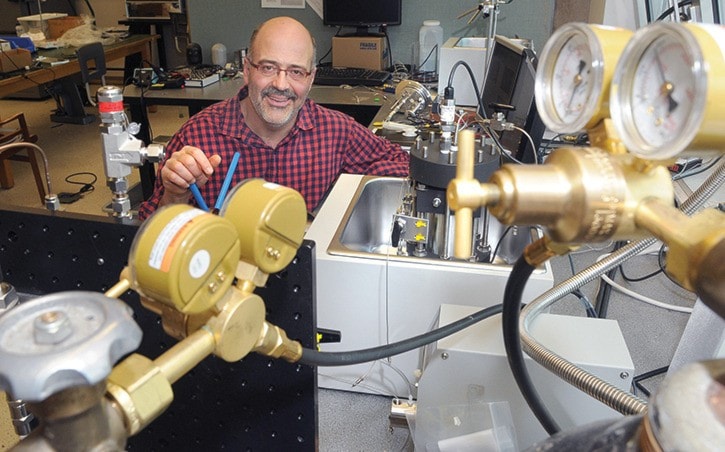Like any great invention, Thomas Fyles discovered his by accident.
In the late 1990s, the University of Victoria chemistry professor came across an agent that kills algae and barnacles to prevent buildup on the hulls of boats, but yet it biodegrades into a non-toxic fertilizer.
Commercial applications of an environmentally friendly antifouling agent are potentially lucrative and vast, from sailboats to supertankers to oil rigs.
But flipping a technology from the lab into a viable business is no easy task. UVic has been touted as one of the most creative universities in Canada, and yet only a small fraction of its big ideas will see the light of day.
Researchers at UVic work with UVic Industry Partnerships, an office that helps scientists disclose and patent intellectual property, and moves those innovations toward commercialization by collaborating with industry and government.
As Fyles points out, patience is a virtue when it comes to developing technology for the real world. He and Robert Rowe of RhoCraft R&D received their original patent in 2003 for an antifouling compound, and brought it to UVic IP in 2005.
In 2012, more than a decade after its discovery, the technology was licenced to GreenCentre Canada in Kingston, Ont., itself a government-funded entity that further validates chemical compounds before licensing to private industry.
“All technology takes forever. There is no such thing as an instant process,” Fyles says. “The business of technology transfer is complicated. There is a huge gap between a company taking on risk and what a university is doing in technology development. UVic Industry Partnerships tries to bridge that gap.”
Kathy Veldhoen, vice-president of UVic IP, agreed it’s always a challenge to secure funding to move an incubating technology from the lab to a “proof of concept” device – the point where private industry would be more likely to invest.
“It’s a long-term process with any university related technology,” Veldhoen says. “It can take anywhere from a few years to over 10 years to see something come to its full potential.”
The university has seen it share of successes – in the past two decades UVic IP has processed 800 invention disclosures, helped file 400 patent applications and spun off 62 companies in an array of high-tech fields, from magnetic refrigeration to medical biosensors to non-toxic herbicides.
“UVic has an amazing wealth of research expertise and programs,” Veldhoen says. “With (private) companies it’s a relationship building exercise. It’s a long-term process and it’s challenging because it’s a big world out there.”
Revenue generated for UVic from technology licences remains relatively minor – $2.6 million over about six years. Total research funding for UVic hit beyond $100 million in 2011-12 alone. Veldhoen notes that high cash returns from university technology isn’t the norm – the ultimate goal of industry partnerships is to enhance education and research on campus, and to add to the economy through high-tech spinoff companies.
Peter Wild, a professor of mechanical engineering, admits after years of hits and misses, he’s tempered his expectations on developing a commercially viable technologies. These days he and UVic IP are working with a company to commercialize fiber optic pressure sensors, the size of the diameter of a few hairs, for use in medical devices.
“I’m an applications guy – I’m motivated by the sense that there is a user for what we are doing,” Wild says. “And there is a huge benefit for the students to get involved in the commercialization process – disclosing inventions, dealing with patent agents and talking to companies.”
Wild is also looking to transition his micro pressure sensors to industrial applications, rather than medical, mainly due to a less onerous approval regime.
“I’ve got six or eight patents and worked hard on commercialization, and have come close, but it is a difficult transition,” Wild says. “I still get excited, I’m still motivated, but I’m more realistic about the odds.”
editor@saanichnews.com
